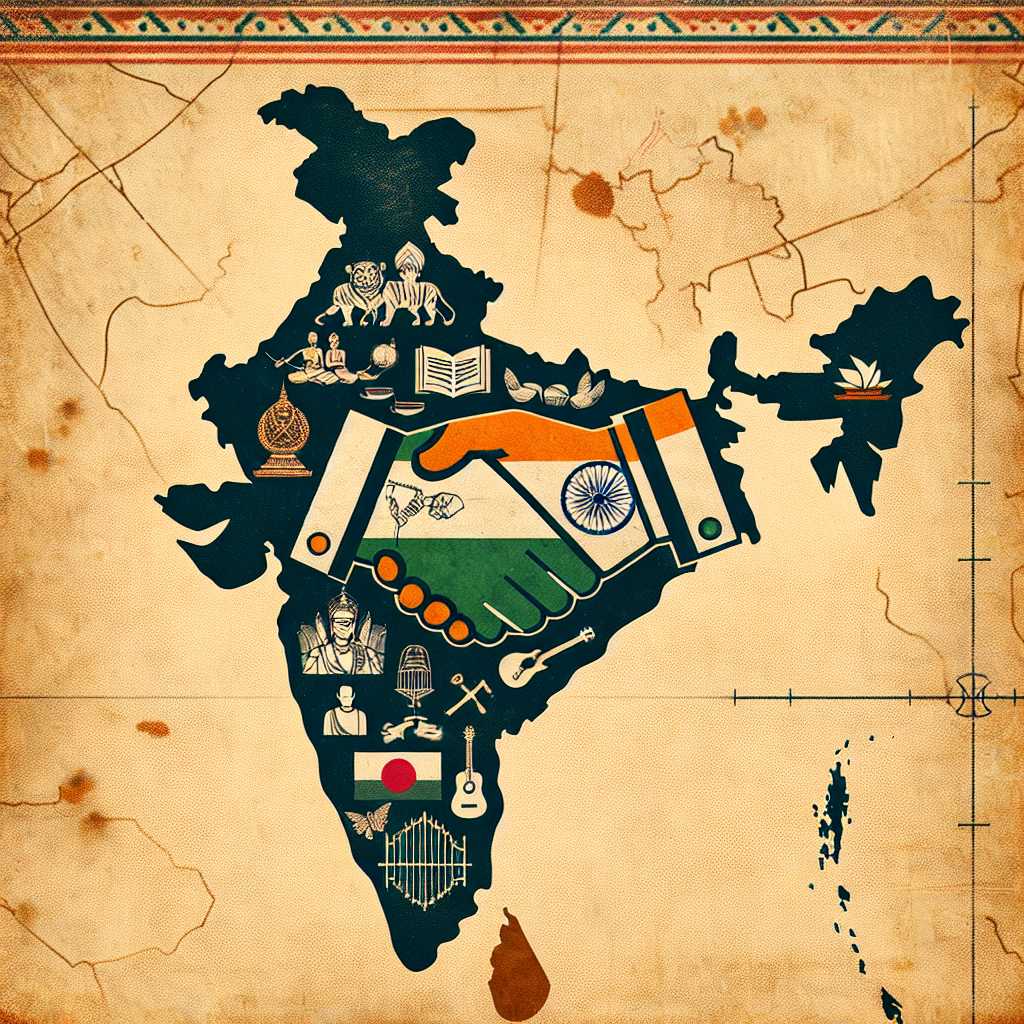India vs Bangladesh: A Comprehensive Analysis of Sub-Continental Geopolitical Dynamics
India and Bangladesh share a complex relationship marked by cultural ties, historical interactions, and intricate geopolitical dynamics. This article delves deep into the multi-faceted aspects of the India-Bangladesh relationship from historical ties, economic cooperation, border management, security concerns, and challenges, to cultural exchanges and future potentials.
Historical Context and Establishment of Diplomatic Relations
India and Bangladesh have been intrinsically linked through history, with shared cultural heritage dating back centuries. Following the end of British colonial rule in 1947, the region was divided into two countries: India and Pakistan. The latter comprised two geographically and culturally distinct areas: West Pakistan (now Pakistan) and East Pakistan (later Bangladesh). After a decade of political and linguistic discrimination, the Liberation War of 1971 led East Pakistan to seek independence from West Pakistan. India played a crucial role by providing support to the Bangladeshi independence movement, eventually leading to the creation of an independent Bangladesh.
Since 1971, both nations have sought to establish cordial diplomatic ties. Relations between the two countries have generally been friendly, enhanced by India’s recognition of Bangladesh’s independence soon after its emergence as a new nation.
Economic Ties and Trade Agreements
The economic engagement between India and Bangladesh has witnessed significant growth over the years. India is one of Bangladesh’s biggest trading partners, with trade volume witnessing a substantial increase. Investments and cooperation span various sectors including textiles, water resources management, infrastructure development, transportation, energy, and telecommunications. The Indian government has extended multiple lines of credit worth billions of dollars to finance infrastructure projects in Bangladesh contributing to regional connectivity initiatives.
Structurally fortified by multiple bilateral trade agreements aimed at increasing regional integration and reducing barriers to commerce, economic ties are central to maintaining a stable relationship. Additionally, the countries are both members of regional organizations such as SAARC (South Asian Association for Regional Cooperation) and BIMSTEC (Bay of Bengal Initiative for Multi-Sectoral Technical and Economic Cooperation), bolstering economic collaboration.
Complexities in Border Management and Security
The Indo-Bangladesh border is one of the world’s longest international boundaries. Managing this extensive border presents a considerable challenge with issues ranging from illegal migration, human trafficking, drug smuggling to insurgency worries on both sides. In recent years, the Indian government has sought to augment border security through fencing projects while engaging in joint efforts with Bangladesh to crack down on criminal activities.
Both governments have worked collaboratively through coordinated patrols and intelligence sharing to tackle these concerns while respecting human rights. Border management has also seen the implementation of various humanitarian measures such as setting up border ‘haats’ (markets) to allow local trade fostering goodwill among border communities.
Diplomatic Challenges Amid Regional Politics
Notwithstanding strong cultural linkages and active economic cooperation, challenges persist within the geopolitical context. Watershed management is one such sustained point of dialogue centered around sharing the waters of over 50 trans-boundary rivers. The Farakka Barrage issue has historically been a sore point in this respect.
Furthermore, the presence of China in South Asia also plays a potentially disruptive role in India-Bangladesh relations due to strategic interests involving funding infrastructure projects in Bangladesh. Nevertheless, both countries have consistently stressed their intent to maintain sovereignty and uphold mutual respect while navigating complex regional geopolitics.
Cultural Exchanges and Educational Collaboration
Cultural exchange forms an integral pillar underpinning Indo-Bangladesh links. People-to-people contact nurtures mutual understanding strengthening ties across borders. These exchanges occur through cinema, art exhibits, literature festivals, culinary events among others.
Education constitutes another area where collaboration unfolds with exchanges between universities enabling students from both nations to benefit from expanded knowledge horizons. Scholarship programs sponsored by the Indian government facilitate Bangladeshi students in pursuing higher education in eminent Indian institutions.
Future Prospects For Enhanced Cooperation
Moving forward, India and Bangladesh have substantial scope for further enhancing relations through cooperation in high-technology sectors like space research, information technology, biotechnology, nuclear energy for peaceful purposes, as well as combating climate change impacts together which both countries are particularly vulnerable to due to geographical positioning.
By leveraging strengths such as shared history and culture mutual strategic interests noting authentic globalization opportunities continuing advancement dialogue working resolution outstanding issues enjoys brighter future full prosperity stability secured enhanced partnership.
Notes
Image Description: A faded political map showing India and Bangladesh highlighting major cities, with symbolic icons representing trade agreements (such as handshake), cultural exchange (such as musical instruments and art), border security (like a fence) depicted along their shared border line symbolizing multiple aspects of their diplomatic relationship.

